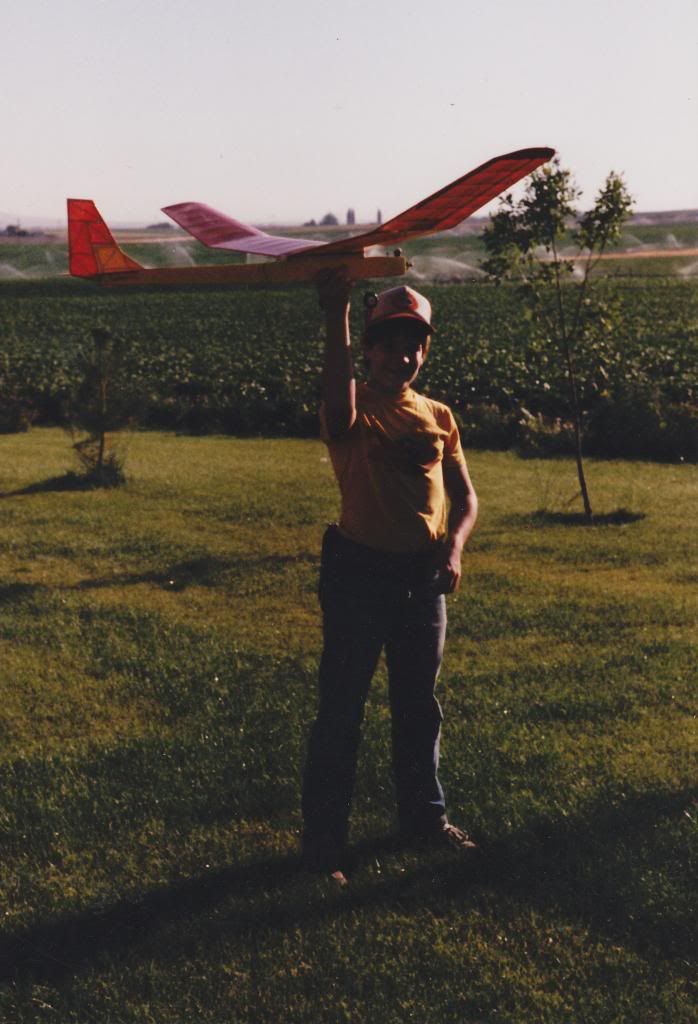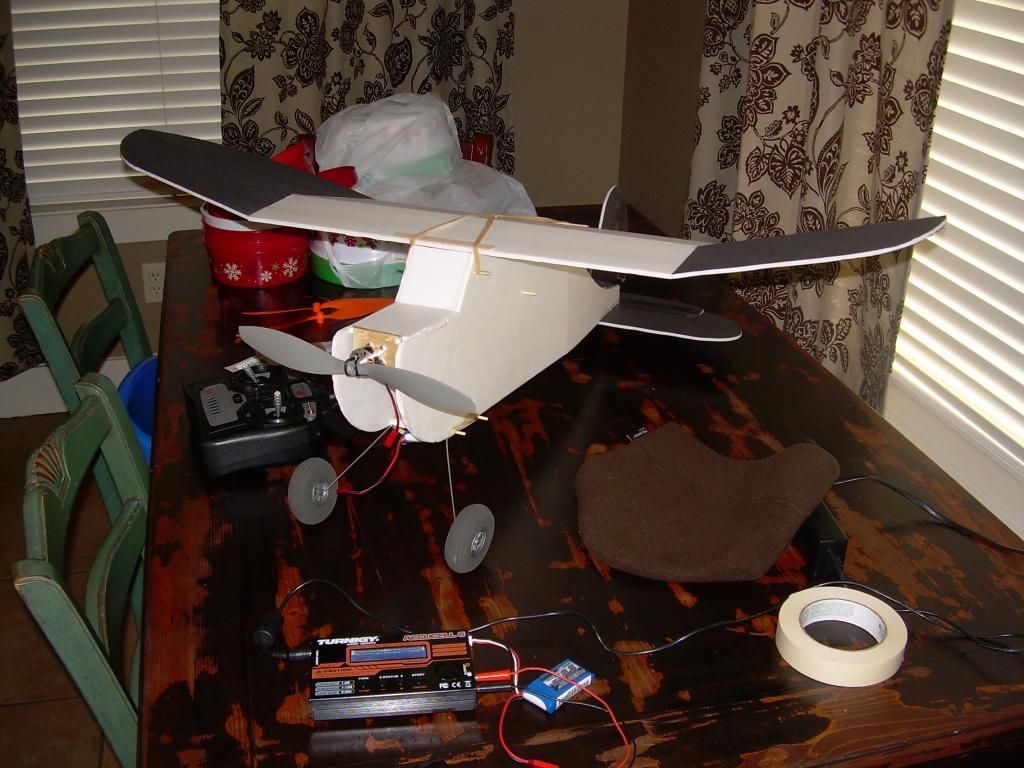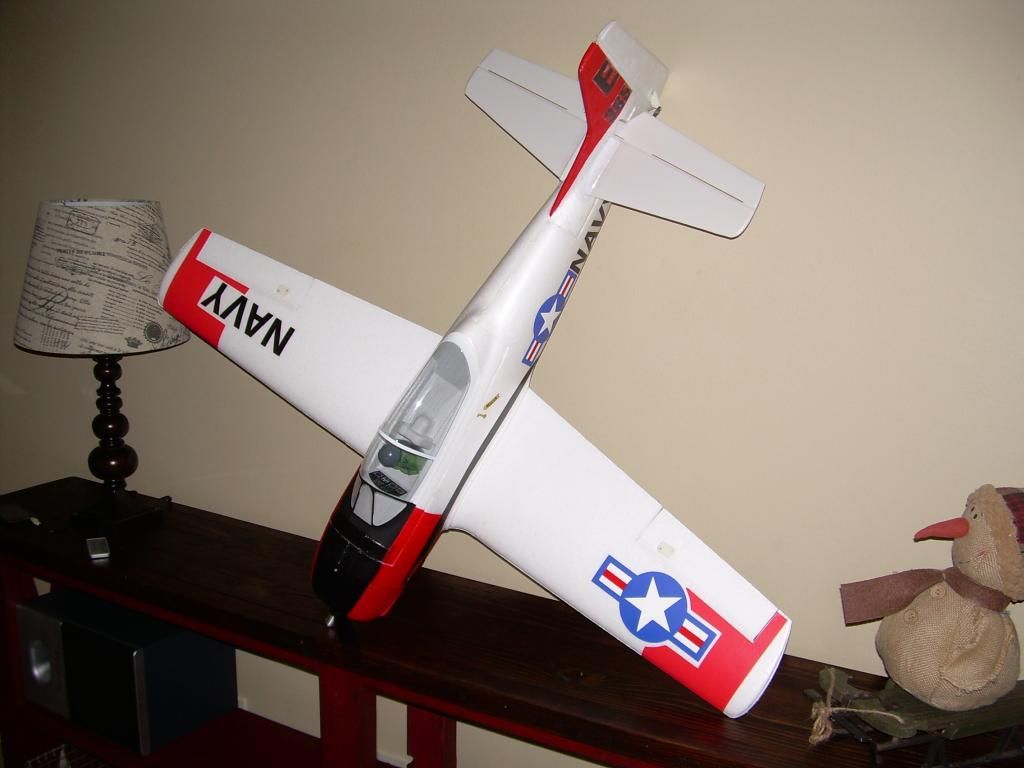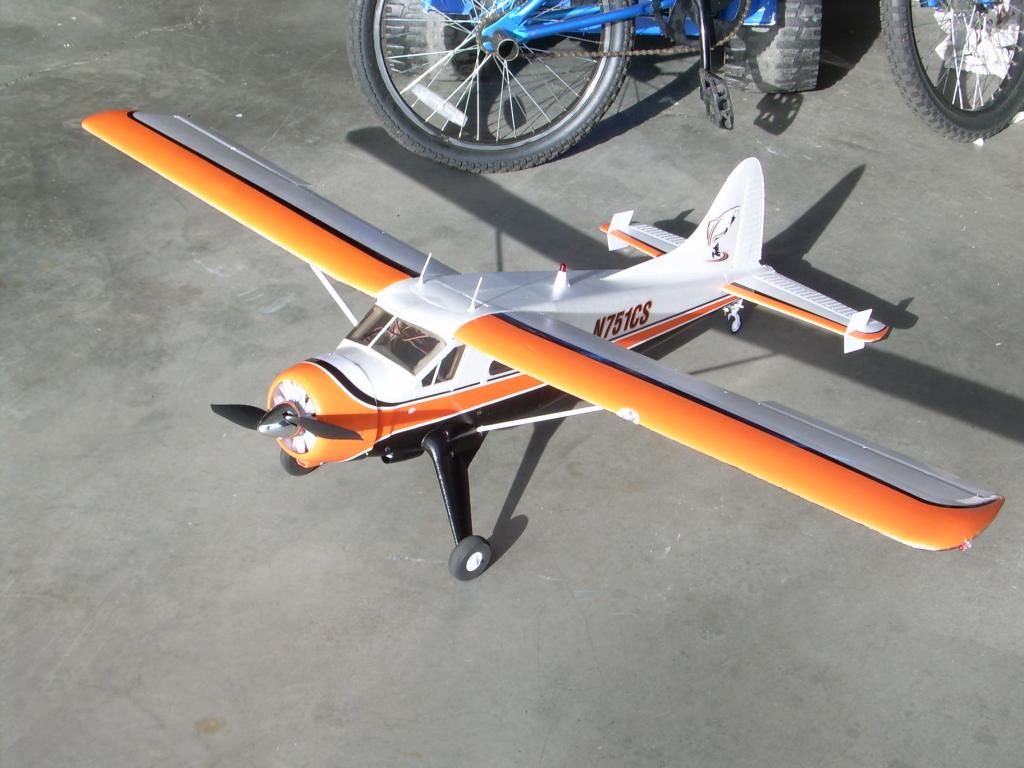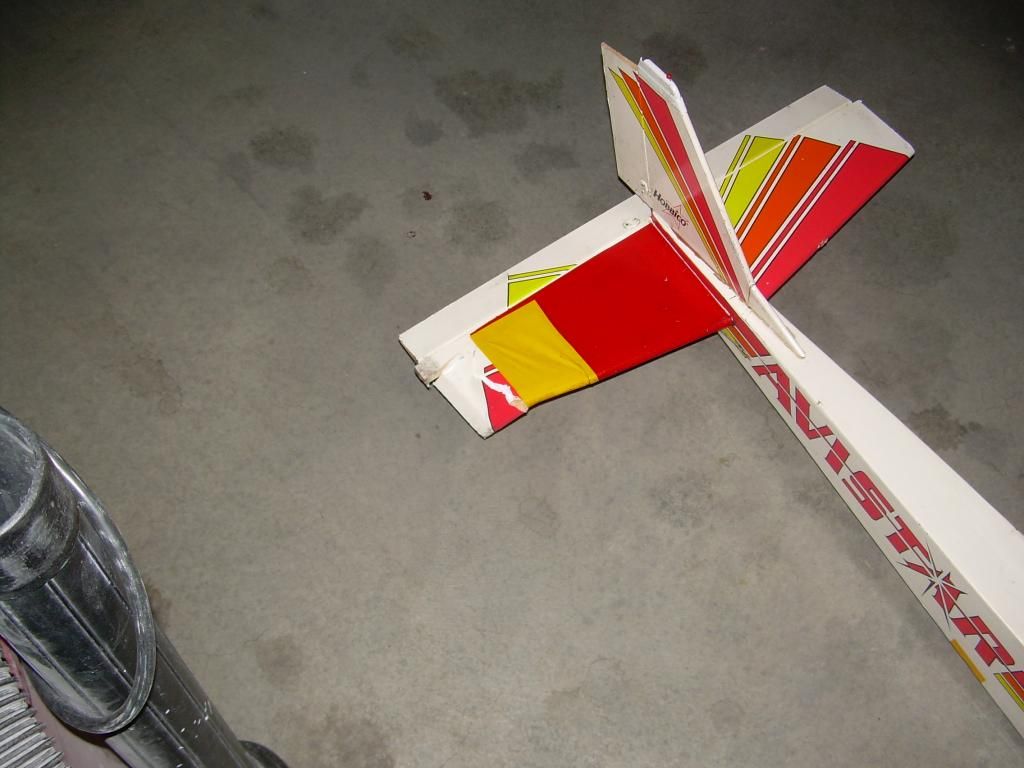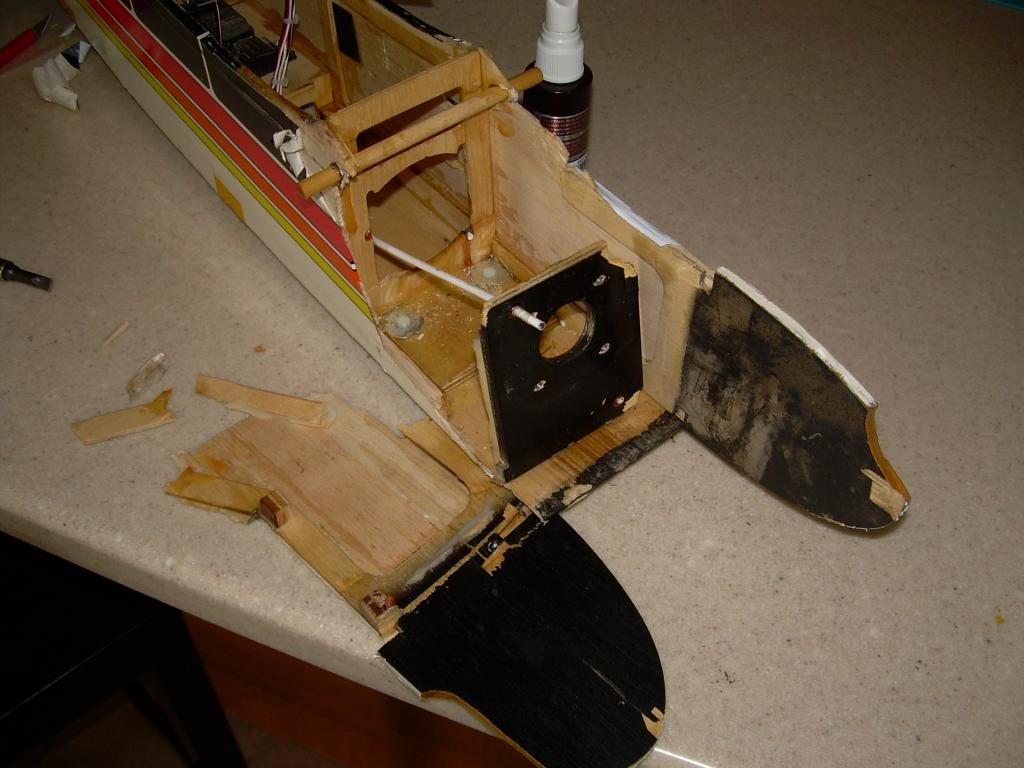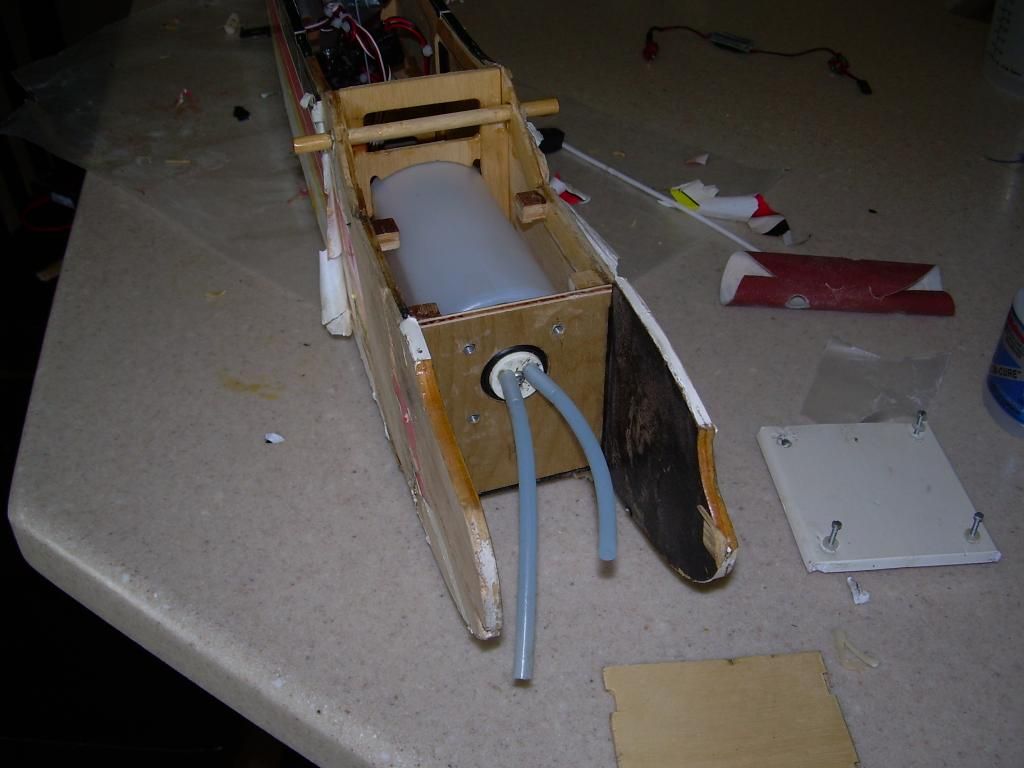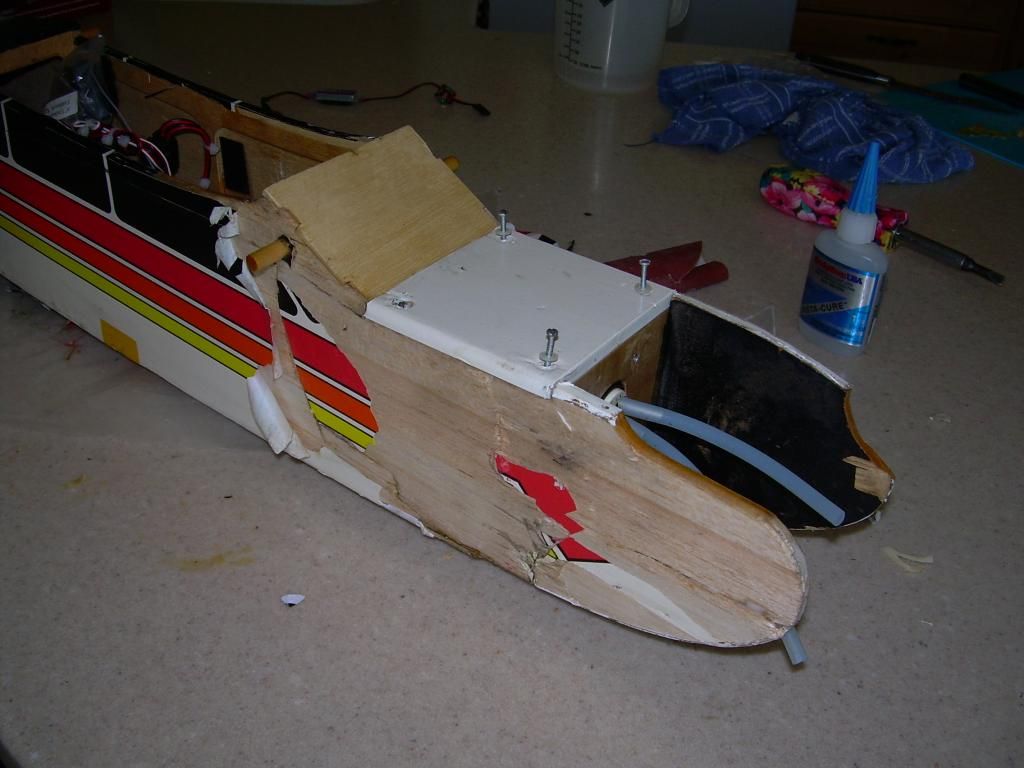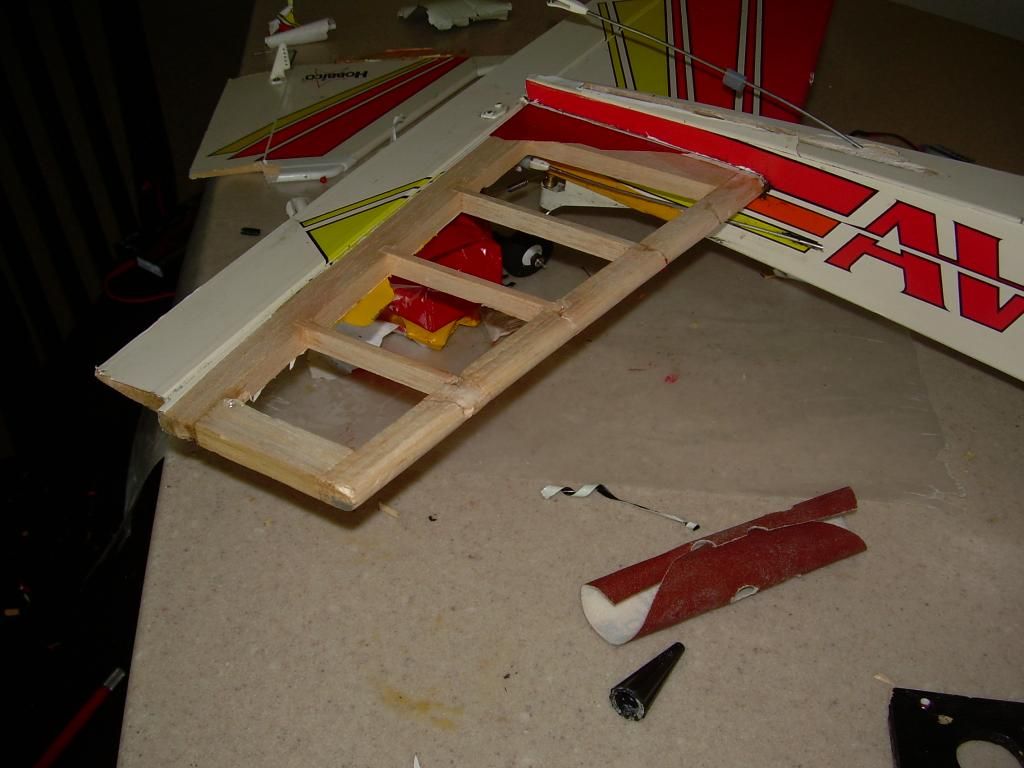Here's me with the Piece O' Cake. I think I was 11 or 12 in this picture, maybe 13 at the oldest.
Turn the clock forward almost 30 years and the RC plane bug has bitten me again. My first attempts were with planes built of Dollar Tree foam board using plans from the internet. The first plane was a FliteTest Old Fogey.
This was a great plane to start with since it was such a slow gently flying plane. It was certainly not powerful, but with light wing loading and the polyhedral wing it was stable and gave a beginner like me time to react. Now Pandora's box was open.
For Christmas my 9 year got an ARES Gamma Pro, and I got a Parkzone T-28 Trojan, as well as a new 6 channel Spektrum Transmitter. The Gamma was faster than I anticipated, but I was able to fly it and even had Jared fly it on a buddy cord (when two transmitters are linked in a master/slave configuration). The Gamma gave me the courage to fly my T-28 which actually just hung from the ceiling in the spare bedroom until February-March time frame. Once I put the T-28 in the air, I was completely hooked!!
I am fortunate to have a very patient and tolerant wife. In the following months I devoted a LOT of time to RC planes. I built and bought a dozen or so, most of them made from foam of one sort or another. The Flite Test planes are particularly fun and really quite inexpensive.
One day while at the RC flying field in rural Hazelton, ID I saw a full scale DHC2 Beaver land at the RC field. This of course inspired my to get a Beaver of my own.
The landing at the RC field.
My Flyzone Beaver, almost the same color as the one that landed at the RC field!
At some point, probably around the time I was building the first Old Fogey, a friend at work gave me an old Hobbico Avistar. This is a glow powered advanced RC trainer. It's a step up from the entry level planes in the fact that it has a semi-symmetrical airfoil, making it a bit more aerobatic.
This is the Avistar as I received it. It had a few bumps and bruises but really wasn't in terrible condition.
Remembering as a kid how much I struggled with a plane very similar to this, I was pretty intimidated by it. I put it up and really thought I needed to wait to fly it. I thought I had to be a lot better pilot. Little did I know, it wasn't actually that hard to fly. I think it's actually as easy or easier to fly than my T-28. It was definitely much easier to fly than some of the foam creations I had conjured up!
The first outing to the flying field, with the Avistar, made me realize how much drag it got from the tricycle gear configuration. Not being one to leave well enough alone, I converted it to a conventional style landing gear, also known as a tail dragger.
It was now much easier to get off the grass runway at the flying field! Here's a video of my flying the Avistar like I stole it!
It's not the greatest quality, but you get the idea.
Sadly, just yesterday, the Avistar had a rather hard unintended landing. During a maneuver known as a stall turn, it appears that the control horn on the elevator suffered a mechanical failure. Needless to say, a plane without an elevator is doomed. I didn't have a camera with me at the field, so here's the aftermath....
The wing also had some minor damage, but appears to be very repairable. The front of the fuselage is a different story. The right hand side (not shown in the picture) took the brunt of the impact, and was shattered into 15 pieces or so.... Not really wanting to spend the money to replace the plane, but really wanting to keep it flying, I decided to try to reconstruct the fuselage. After a few hours of trial fitting and manipulation, it appeared that it might actually be salvageable.
After gluing the splintered right side back together, but not yet attached to the plane.
At this point I have glued the bulkhead that holds the rear of the fuel tank back in, and you can see the firewall just set in the fuselage. I could not find the upper corner of the firewall, so I had to make a new firewall, this is the old one in the above picture. You can also see that not all of the bits of the fuselage are glued back in place.
After a little more time and a lot more glue there is some definite progress. The new firewall is installed and the fuel tank is in place to check how it fits.
Here, the windscreen and the top hatch are mocked up, to see how well they fit. The alignment looks good, it looks like it is a successful repair!
I also pieced the horizontal stabilizer back together. Now, I am out of glue and at a point where I need to remove the rest of the covering from the plane.
There is quite a bit of filling and sanding that will have to be done to complete the job, but it definitely looks like it will fly again. I just can't see throwing a plane in the garbage if it can be fixed. This one was a bit of a challenge, but definitely salvageable, and for much less money than a new plane. Stay tuned for updates. I think I will rename the plane Lazarus, since it is coming back from the dead!!
